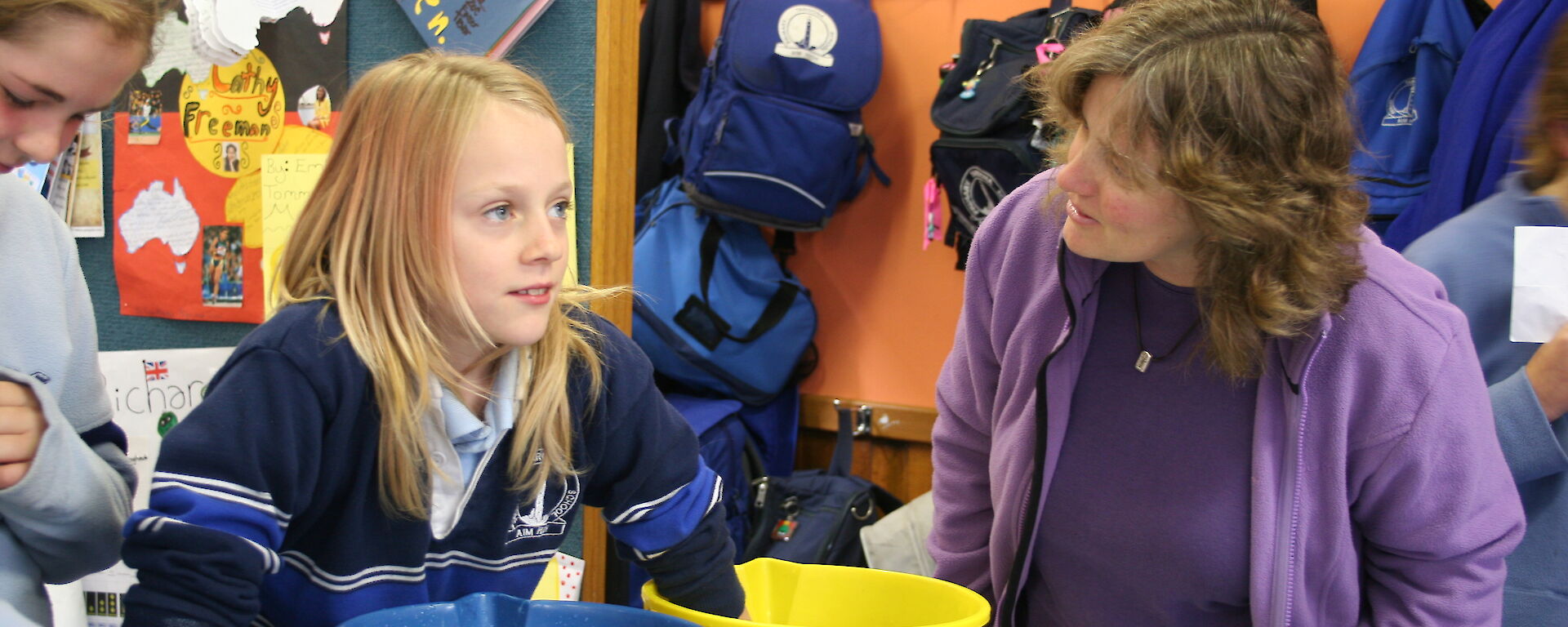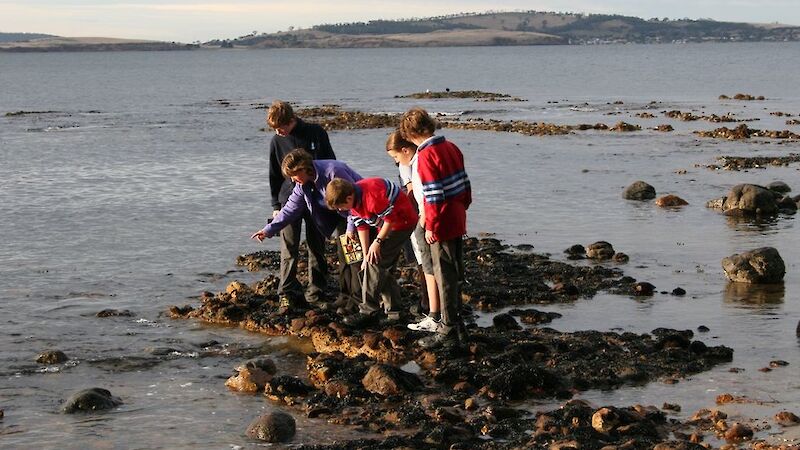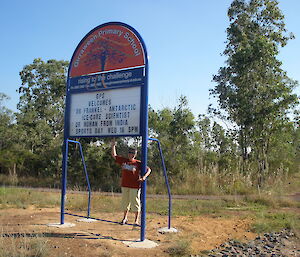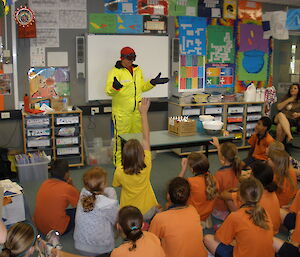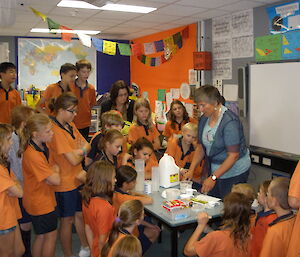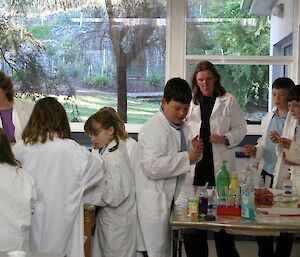Scientists in Schools is a national program that creates and supports flexible, ongoing partnerships between scientists and teachers with the aim of providing inspiration, fun and learning for students, teachers and scientists alike. The recently established subprogram, Mathematicians in Schools, involves people who use maths as part of their working life — such as statisticians, mathematical scientists, economists and surveyors.
The program, which is funded by the Australian Government and managed by CSIRO Education, has been embraced with great enthusiasm — over 1800 partnerships have been established since it started in July 2007. Several Australian Antarctic Division scientists participate in the program, contributing valuable ideas and topical presentations on a range of subjects. In turn, they get a fresh perspective on science from their contact with the classroom environment.
Taking southern science to the Northern Territory
From April to June this year, ice core analyst Dr Barbara Frankel visited schools in Alice Springs, Katherine and Darwin to spread the word about Australian activities in Antarctica. She presented her work to over 150 students and teachers, inspiring and encouraging outback dwellers to take an interest in Antarctica.
In late 2009, when rural Darwin teacher Kay Chaffey heard about the opportunity for a long-distance partnership with a Hobart-based Antarctic scientist, she registered for the Scientists in Schools program. Barbara and Kay initially established their partnership via email and telephone. This communication proved an excellent stimulus for their ongoing work and subsequently, Barbara decided to head north and visit the school in person.
During her visit to the NT, Barbara spent three mornings with the students, discussing her own work as well as the variety of jobs available in Antarctica. Using glacier goo, she simulated the spread of the ice sheet and then, in small groups, students made their own glacier goo and measured its rate and spread on a map of Antarctica.
Lochie, one of the students commented “I thought Antarctica was just ice but you showed me what it really is. I also want to thank you for telling me what you do in Antarctica as a glaciologist. That inspired me to work there when I’m older.”
For Kay, the benefit for her students was obvious and all involved were thrilled with the experience.
“The students said how fantastic the time with Barbara was, and how it brought the science and everything they have learned about it to life,” she said.
Barbara’s thoughts on her experience clearly demonstrate the success of her visit.
“The students comments were just terrific and made me feel so honoured and humbled. I still can’t get over the children’s excitement and attention when I was with them! They remained engaged with what I had to say and hung on every word! I really didn’t expect that level of concentration from such young people.” she said.
Barbara received some lovely thank you letters from the students at Giraween Primary School after her visit there.
Young minds stretched by science
Quantitative Ecologist Dr Louise Emmerson is working with students at Taroona Primary School in suburban Hobart. Their partnership was featured on ABC TV’s Catalyst program in August 2010.
Lynn Murray, one of Louise’s partner teachers, says that Louise’s participation in their class activities captured her students’ attention in ways that she couldn’t have imagined. She says that Louise made ‘being a scientist’ look like a desirable career for both boys and girls.
“Louise came to my class and we did a study of the reef below the school at low tide. The kids were captivated — the only whinge they had was counting the trillions of mussels in their section! Then Louise came back in a few days later. They happily gave her their attention, they analysed the graph she showed them, asked fantastic questions about the plants and animals they had observed and then went on to ask her about being a scientist.”
Louise said that her exercise, surveying a range of inter-tidal species, was designed to encourage the students to “get their heads into the reef, and look at the creatures in a new light”.
“The spin off was that there were some creatures that were very tedious to count, and this forced them to be rather creative in their attempts to put as little effort in as possible! Some of them made a circle with their hands for example and counted the mussels in there, and then multiplied that by the number of circles in the area covered by mussels… But it was a great way to open up the discussion … [It] ultimately resulted in them devising better sampling strategies and developing a greater appreciation of the relevance of spatial scale for surveying creatures both here and in the Australian Antarctic Territory.”
She says that being scientifically literate should be a key outcome of every child’s education.
“We're not trying to turn every child into a scientist; that is not the goal. It’s not just understanding science or how to do it, but developing within each and every one of us a questioning mind and a capacity for loving learning and exploring the world around us … Technology is advancing at such a great pace that it will become increasingly harder to keep up with these advances without having a good understanding of science.”
Watch penguin scientist Dr Louise Emmerson’s interaction with Tasmanian students on ABC TV’s science program Catalyst.
Become involved
If you are interested in becoming part of Scientists in Schools as either a scientist or a teacher, or in learning more about the program, go to the website where you can find more showcases of partnerships and online registration forms. You can also contact your local project officer with any questions.

